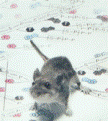Papers in the Biological Sciences

Jay F. Storz Publications
Document Type
Article
Date of this Version
2012
Citation
Mol Biol Evol. 29(7): pp. 1735-1745.
Abstract
In the Metazoa, globin proteins display an underlying unity in tertiary structure that belies an extraordinary diversity in primary structures, biochemical properties, and physiological functions. Phylogenetic reconstructions can reveal which of these functions represent novel, lineage-specific innovations, and which represent ancestral functions that are shared with homologous globin proteins in other eukaryotes and even prokaryotes. To date, our understanding of globin diversity in deuterostomes has been hindered by a dearth of genomic sequence data from the Ambulacraria (echinoderms + hemichordates), the sister group of chordates, and the phylum Xenacoelomorpha, which includes xenoturbellids, acoelomorphs, and nemertodermatids. Here, we report the results of a phylogenetic and comparative genomic analysis of the globin gene repertoire of deuterostomes. We first characterized the globin genes of the acorn worm, Saccoglossus kowalevskii, a representative of the phylum Hemichordata. We then integrated genomic sequence data from the acorn worm into a comprehensive analysis of conserved synteny and phylogenetic relationships among globin genes from representatives of the eight lineages that comprise the superphylum Deuterostomia. The primary aims were 1) to unravel the evolutionary history of the globin gene superfamily in deuterostomes and 2) to use the estimated phylogeny to gain insights into the functional evolution of deuterostome globins. Results of our analyses indicate that the deuterostome common ancestor possessed a repertoire of at least four distinct globin paralogs and that different subsets of these ancestral genes have been retained in each of the descendant organismal lineages. In each major deuterostome group, a different subset of ancestral precursor genes underwent lineage-specific expansions of functional diversity through repeated rounds of gene duplication and divergence. By integrating results of the phylogenetic analysis with available functional data, we discovered that circulating oxygen-transport hemoglobins evolved independently in several deuterostome lineages and that intracellular nerve globins evolved independently in chordates and acoelomorph worms.


Comments
Copyright © 2012 The Author. Used by permission.